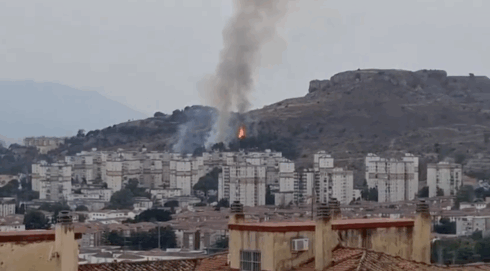ANDALUCIA is breaking records again this summer despite prices hitting historic peaks and inflation biting hard.
Last-minute bookings are being thanked for the book, with hotels along the coast seeing 85% occupancy. Tourists aren’t planning months in advance – they’re booking just days before their holidays begin.
Gaspar Saez, director at Barceo Hotel Group, which runs 25 hotels in Andalucia, says last-minute trends are ‘the main difference compared to previous years’. Rocio Galan of Melia Hotels also confirms the shift, revealing a 10% boost in late bookings in the Torremolinos-Costa del Sol area.
While the Spanish market has been on the decline, especially along the Malaga coast (excluding the capital), international tourists have come to the rescue.
If it weren’t for foreigners, the situation could have looked pretty grim, warns Alvaro Graciani, a consultant on tourist rentals. “The Spanish are tightening their belts,” he says, citing rising prices as the culprit.
But flights are packed, with Malaga and Sevilla airports seeing record-breaking arrivals. The increase in American and Portuguese tourists has particularly helped fill hotel rooms, with British visitors maintaining steady numbers.
Even though room rates have soared, tourists are still flocking to Andalucia, spending big and enjoying the good life. For example, hotel prices jumped 7.3% in July and 6.2% in August compared to 2024, with the average price per night for a room sitting at €143 in July and €157 in August. In 2019, those same rooms were €107 and €121.
READ MORE:
- Spain’s secret stunners: Skip the crowds and discover 12 incredible hidden gems you’ve (probably) never heard of
- This is the most beautiful town to visit in Spain this August, according to National Geographic
Rafael Barba from the Federation of Andalusian Hotels says the price hikes are driven by demand and AI, which is adjusting rates in real-time based on weather and room availability.
But there’s a catch – tourists are spending less once they’re there, with hotel service consumption down by 6-9%.
While July and August have been record-breakers, the next challenge for the tourism sector is extending the high season – and tourism bosses are eyeing a boost in September.
Occupancy is expected to rise 4.12% to 80.12%, as tourists with different profiles, like older groups and couples, book their stays later into the autumn months.
Click here to read more Travel News from The Olive Press.








